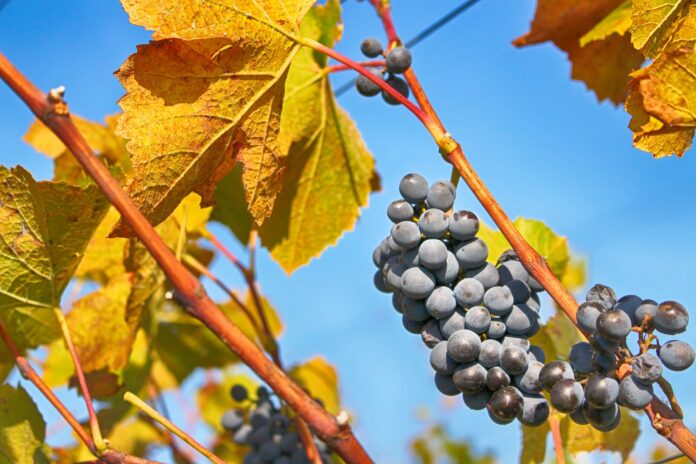
“Extravagant,” “elegant” and “eclectic” are commonly used to describe Eiswein (ice wine), a style of dessert wine made from grapes that have frozen on the vine.
Instead of being harvested in early autumn, like most others, the fruit is left on the vines for much longer and hand picked at the height of winter, usually in the middle of the night at temperatures of -7°C (19.4°F) or below. It is labor intensive and only done in ideal conditions, so it is not made every year.
Frigid temperatures with plenty of sunshine are needed to ripen the grapes. The frozen fruit ensures that the grapes have a high sugar level when picked. Sweet wines must have this high concentration of fruit sugar. During fermentation for a dry wine, the chemical reaction is complete once all the yeasts die, usually when the alcohol reaches 13% to 15% when at this point there is no sugar left, hence producing a dry wine.
To produce a wine that still has some sweetness left in it once the yeast has all disappeared, the winemaker needs grapes that are higher in glucose than usual. The frozen grapes contain very little water and the sugar percentage is very high. It is a long fermentation, nearly 6 months, while the yeasts attempt to eat through all the sugar.
German Eiswein is a rare wine specialty. Tasting it is often described as drinking liquid gold; the flavors cannot be compared to any other wine. Highly aromatic, honey, ripe peaches and mangoes, marmalade, jasmine, caramel, a lush fruit cocktail syrup. Most German Eiswein is made from the Riesling grape, but many other countries make ice wine from Vidal Blanc, Grüner Veltliner, Chenin Blanc, Gewürztraminer for white and Cabernet Franc and Merlot for red, but these are very rare.
German Eiswein is the most famous and expensive, but ice wine is also produced in Austria, Northern Michigan, Finger Lakes New York, many Eastern European countries, China and Canada, which is the world’s largest producer of ice wine. The Niagara Peninsula, Nova Scotia, Ontario and British Columbia consistently have freezing temperatures in winter and their volume is greater than all the other countries combined. Inniskillin, Pelee Island, and Pillitteri are world-renowned producers of Canadian ice wine. Royal DeMaria, a small Canadian winery, released five cases of Chardonnay ice wine in 2006 with a half-bottle price of C$30,000 each.
Serving Eiswein (ice wine if it is not German) is a special time. It is sweet, very sweet, sweeter than a can of soda, so a little goes a long way. For this reason, it is mostly sold in half bottles. Serve it cool, not cold, to reap the most flavors. Small flutes or small wine glasses are best, as the pour will be only a few ounces. Savor it, smell it and sip it slowly. Best on its own, be careful pairing it with anything too sweet. Marcona almonds with ginger, a savory slice of sausage, sliced peaches with a soft cheese are a few suggested pairings.
Enchanting. Ethereal. Eiswein.
Until next time, Cheers. Reach me at raiseaglass2023@gmail.com.
SAVE A LITTLE:
Chateau Chantal Vidal Ice Wine, Old Mission Peninsula, Michigan.
President Obama and Prime Minister Trudeau sipped this wine at a White House state dinner. Decadent apricot, toasted caramel, baked apples with balanced sweetness. Half bottle. $45.
SPEND A LITTLE:
Dönnhoff Oberhäuser Brücke Goldkapsel Riesling Eiswein 2020.
Explosive nose of tropical fruits, papaya, mango and candied citrus. Dense and concentrated, caramelized nuts, raisins, round, refined and endless racy finish. Organic. Very limited production. Half bottle. $220.












